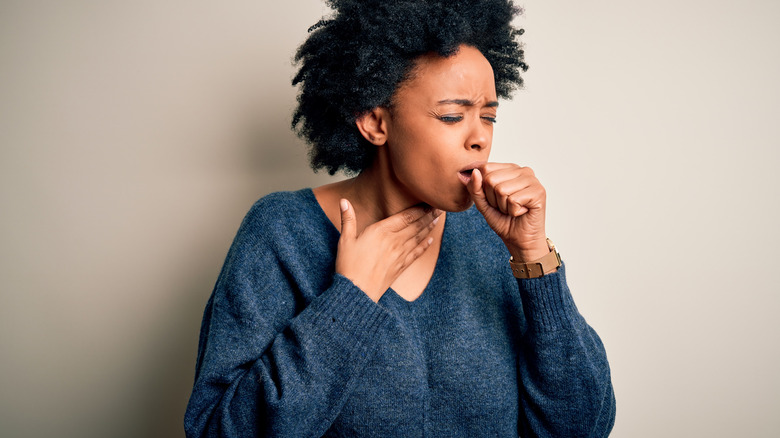Do Cold Symptoms Show Up In Any Particular Order?
The common cold is exactly that — common. But with so many viruses out there like the flu, it can be hard to know what's what. And when a cold does come on, is there any sequence of symptoms to watch out for?
There are millions of cases of the common cold per year in the U.S., according to the Centers for Disease Control and Prevention (CDC). They're the leading cause for children missing school and adults missing work. Adults average two to four colds per year, mostly during winter, while kids can get six to 10 per year (via Institute for Quality and Efficiency in Health Care). Colds are different from flu viruses or SARS-CoV-2 as they tend to only affect the lining of the nose and throat. A cold can also be caused by a number of viruses, which is why we can't vaccinate against them.
While a common cold is relatively harmless, it could affect some people more than others (via Health). Those with weakened immune systems are at a greater risk for other conditions such as pneumonia or bronchitis.
How do symptoms come on?
According to Merck Manual, cold symptoms typically start with a sore or scratchy throat. This is usually followed by sneezing, runny nose, congestion, and generally feeling unwell. Nasal discharge typically starts out watery for the first few days, before becoming thicker. While most symptoms typically end within 10 days, a cough may take longer to go away.
You can prevent catching a cold by washing your hands with soap and water often, avoiding touching your face before you've washed your hands, and keeping away from people who are sick, especially in colder months. It's also important to help protect others by staying home when you're sick, turning away from others before sneezing or coughing, disinfecting surfaces often, and washing your hands after sneezing, coughing, or blowing your nose.
Since cold symptoms can be similar to those of COVID-19, the CDC recommends getting tested for the virus, especially if you've recently had contact with someone who's tested positive.

